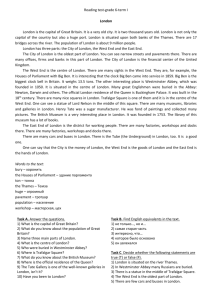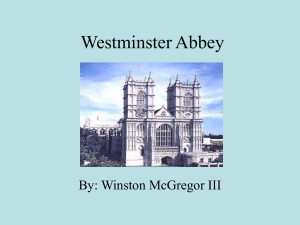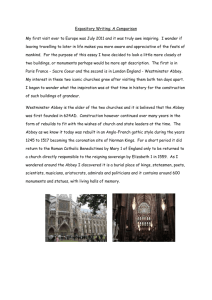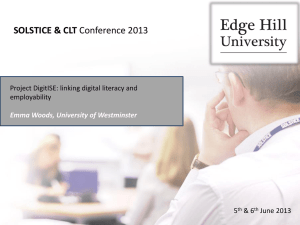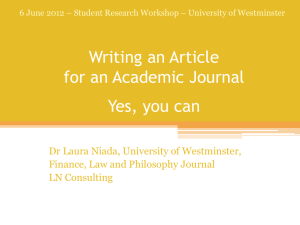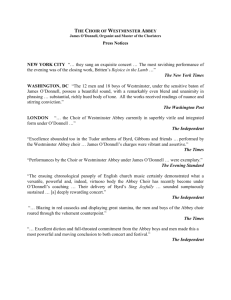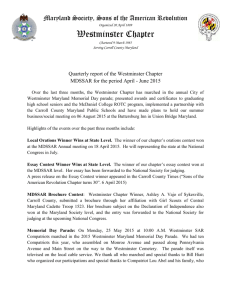Westmintser Cathedral
advertisement
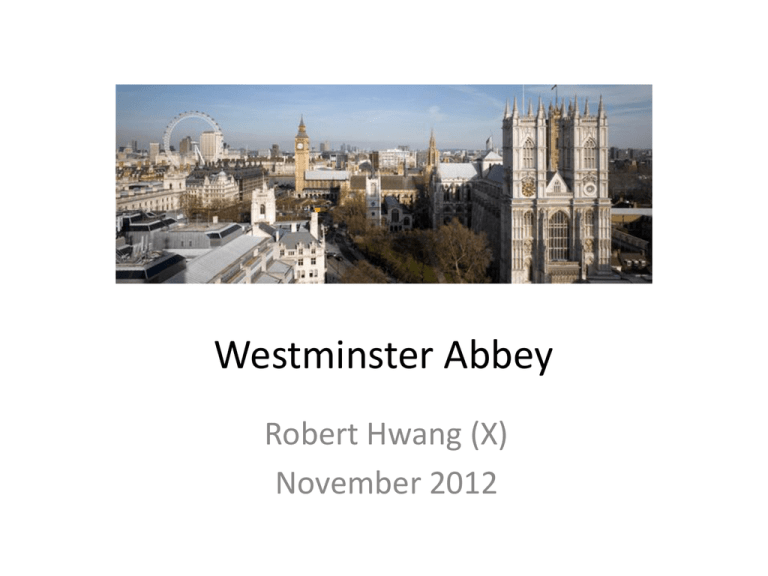
Westminster Abbey Robert Hwang (X) November 2012 Westminster Abbey - introduction • Collegiate Church of St. Peter at Westminster, located in the City of Westminster, by the Thames in South West London. • Initially established by King Edward the Confessor (later Saint Edward) in 1040. • The building was subsequently enhanced, the present church begun by King Henry III in 1245. • English Gothic architecture masterpiece. • Still a working church, but one that represents a unique pageant of British history Westminster Abbey – connections with royals and famous people • Royal connections – medieval shrine of an Anglo-Saxon saint at its heart of the building. – Unbroken role as the coronation church since 1066 – final resting place of 17 monarchs – Conducted many royal funerals – Hosted 16 royal weddings • Connections with famous people – burial place for several prominent people in British history Slide 3 Westminster Abbey – Gothic architecture • Gothic architecture – Introduced from France (style of the medieval period) – English Gothic flourished between 1180-1520 • Westminster Abbey has many of the defining characteristics of English Gothic, as follows: – – – – – – pointed arches and large windows large windows vaulted roof and ceiling narrow nave buttress spires • At Westminster Abbey, the physical characteristics combine in such a way as to appeal to the emotions Westminster Abbey – Benedictine monastery / Jerusalem Chamber • Benedictine monastery history – Monks at Westminster Abbey – Dissolution by King Henry VIII – Reign of the protestant Elizabeth I • Jerusalem Chambers – The principal room in the medieval house of the Abbots of Westminster (this house known as Cheyneygates) – Rich tapestries – Historic significance of Jerusalem Chambers Westminster Abbey – World War II • Blitz – numerous bombing raids by the Luftwaffe – night of 10 May 1941 • Protection of treasures – evacuation – protection • Building usage during the War • Victory celebrations – Victory in Europe (VE) Day on 8th May 1945 – Victory over Japan (VJ) Day on 15th August 1945 Westminster Abbey - conclusion • Worship – A living church today, part of the Church of England, with daily services. • Historic significance – One of the world’s greatest churches, a designated World Heritage site – reflects key events in British history • Architectural significance – masterpiece of English Gothic architecture


